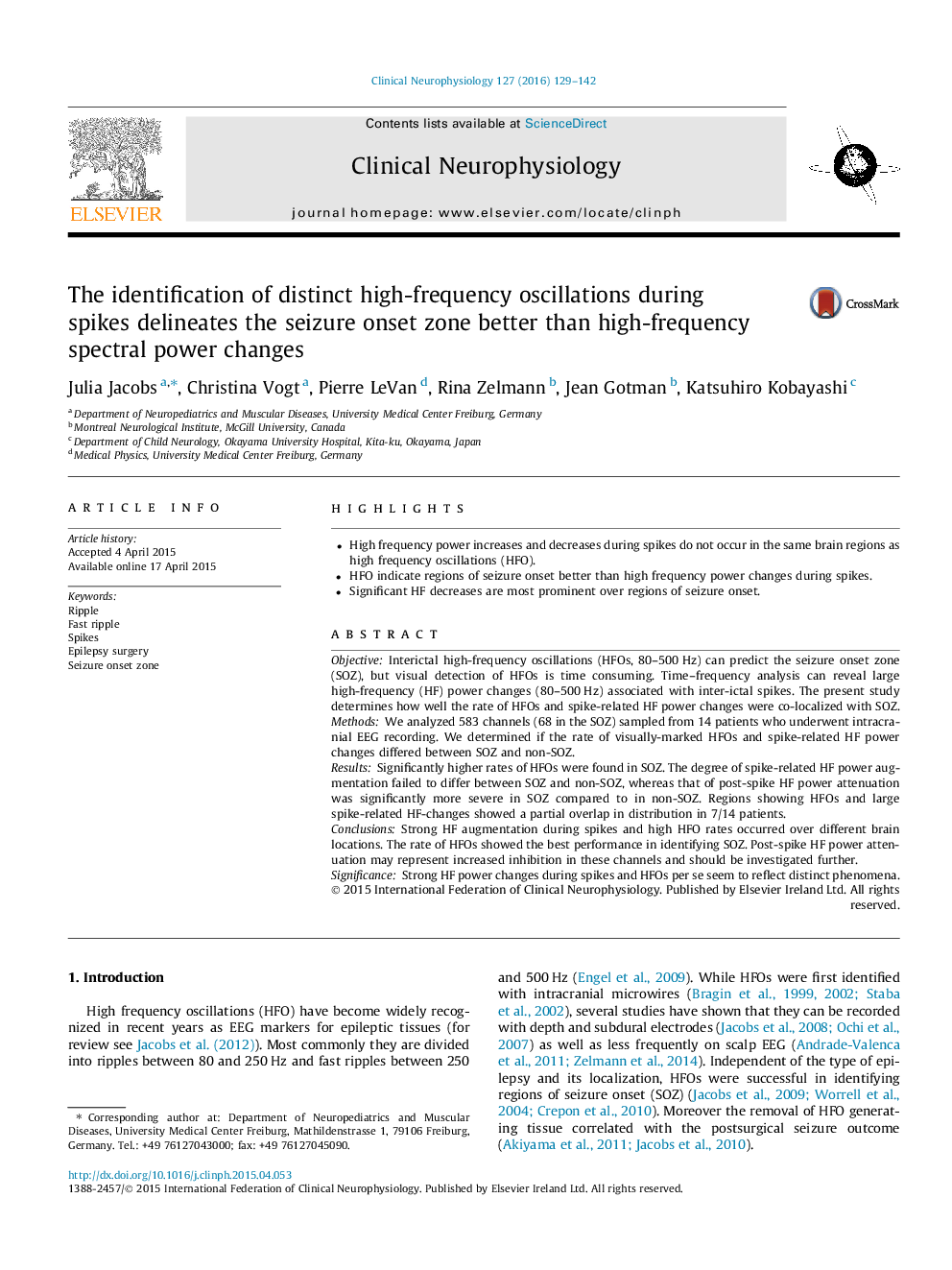| Article ID | Journal | Published Year | Pages | File Type |
|---|---|---|---|---|
| 6007843 | Clinical Neurophysiology | 2016 | 14 Pages |
â¢High frequency power increases and decreases during spikes do not occur in the same brain regions as high frequency oscillations (HFO).â¢HFO indicate regions of seizure onset better than high frequency power changes during spikes.â¢Significant HF decreases are most prominent over regions of seizure onset.
ObjectiveInterictal high-frequency oscillations (HFOs, 80-500Â Hz) can predict the seizure onset zone (SOZ), but visual detection of HFOs is time consuming. Time-frequency analysis can reveal large high-frequency (HF) power changes (80-500Â Hz) associated with inter-ictal spikes. The present study determines how well the rate of HFOs and spike-related HF power changes were co-localized with SOZ.MethodsWe analyzed 583 channels (68 in the SOZ) sampled from 14 patients who underwent intracranial EEG recording. We determined if the rate of visually-marked HFOs and spike-related HF power changes differed between SOZ and non-SOZ.ResultsSignificantly higher rates of HFOs were found in SOZ. The degree of spike-related HF power augmentation failed to differ between SOZ and non-SOZ, whereas that of post-spike HF power attenuation was significantly more severe in SOZ compared to in non-SOZ. Regions showing HFOs and large spike-related HF-changes showed a partial overlap in distribution in 7/14 patients.ConclusionsStrong HF augmentation during spikes and high HFO rates occurred over different brain locations. The rate of HFOs showed the best performance in identifying SOZ. Post-spike HF power attenuation may represent increased inhibition in these channels and should be investigated further.SignificanceStrong HF power changes during spikes and HFOs per se seem to reflect distinct phenomena.
